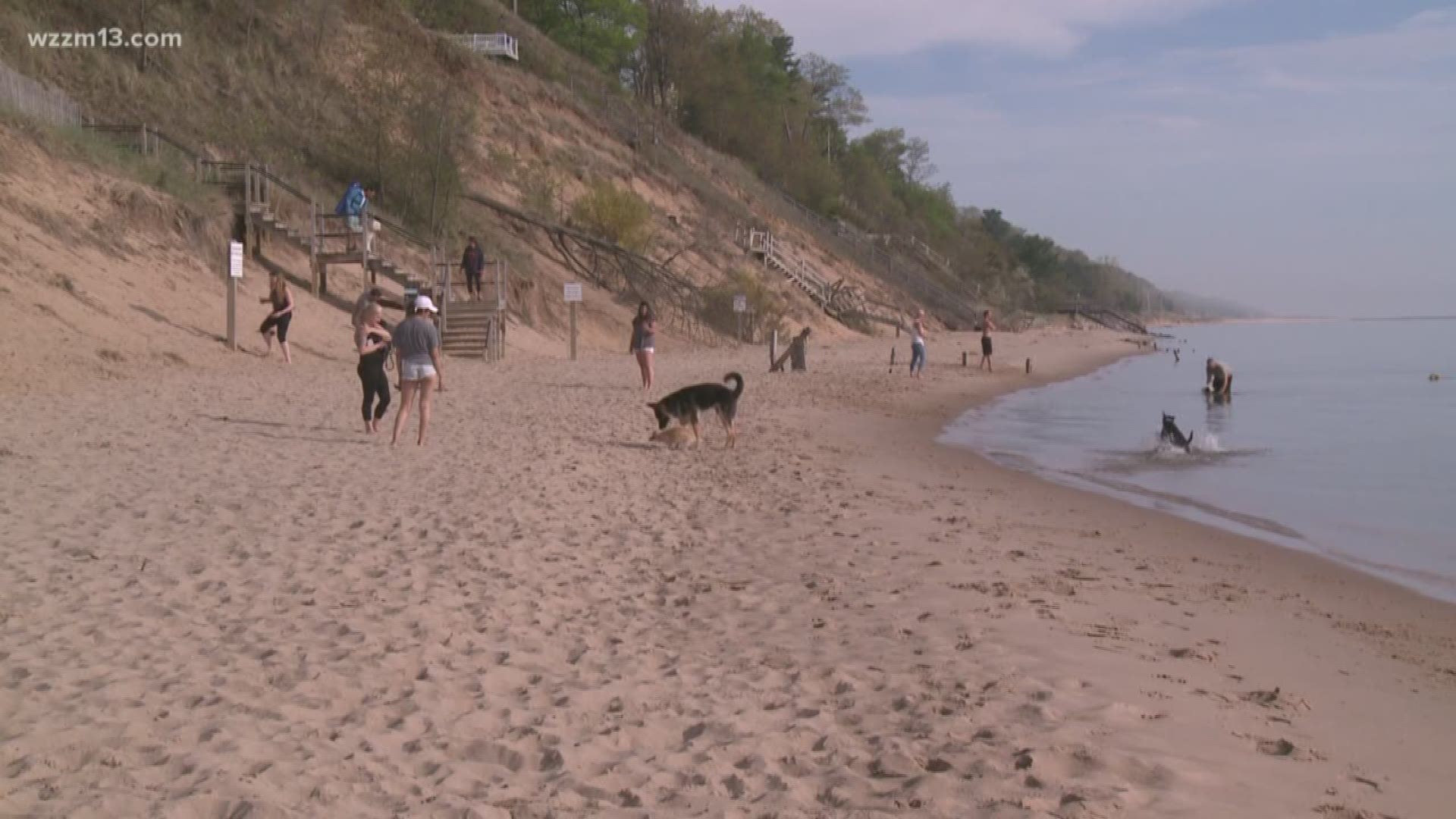OTTAWA COUNTY, Mich. -- Lake Michigan water levels are high once more, making this summer season the third year in a row of high levels.
Ottawa County Parks Operations Manager Bob Reichel says this is the highest water levels have been in about two decades, but the nature of the big lake is cyclical.
“The lake levels go up and goes down,” observes Reichel. “This is something that happens throughout the years and throughout history.”
What makes lake levels go up and down? A big factor is the type of winter that comes before the summer.
A hard winter, meaning colder temperatures and more snow than average, leads to a rise in lake levels. Colder temperatures allow Lake Michigan to freeze, and less exposed water means less evaporation of that water.
The opposite is true of mild winters, where open waters allow more evaporation and thus decreased water levels.
►Related: LAKE MICHIGAN FORECAST
What does this mean for beach goers this season?
Steps and docks may be submerged in water, and narrow beaches will have less beachfront. However, storms this past winter have pounded back dunes, not aiding in dune erosion, but providing more beachfront.
Another debatable factor is the impact on rip current risk. Theories of high versus low water levels and the effect on rip currents go back and forth, but Guy Meadows, the director of the Great Lakes Research Center, believes high water levels increase rip currents.
►Make it easy to keep up to date with more stories like this. Download the WZZM 13 app now.
Laura Hartman is a meteorologist at 13 ON YOUR SIDE. You can contact her by email at lhartman@wzzm13.com, or follow her on Facebook or Twitter.

